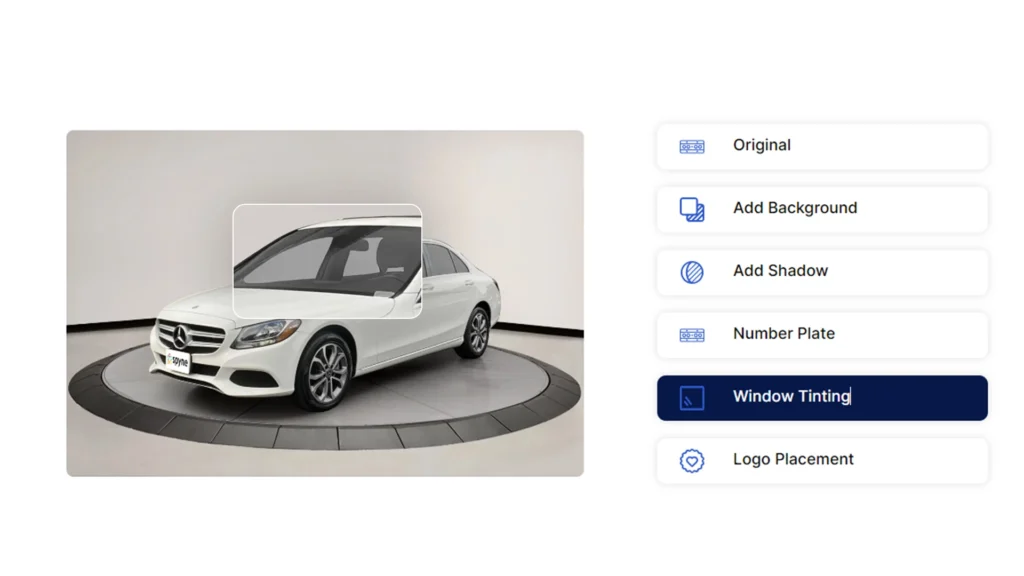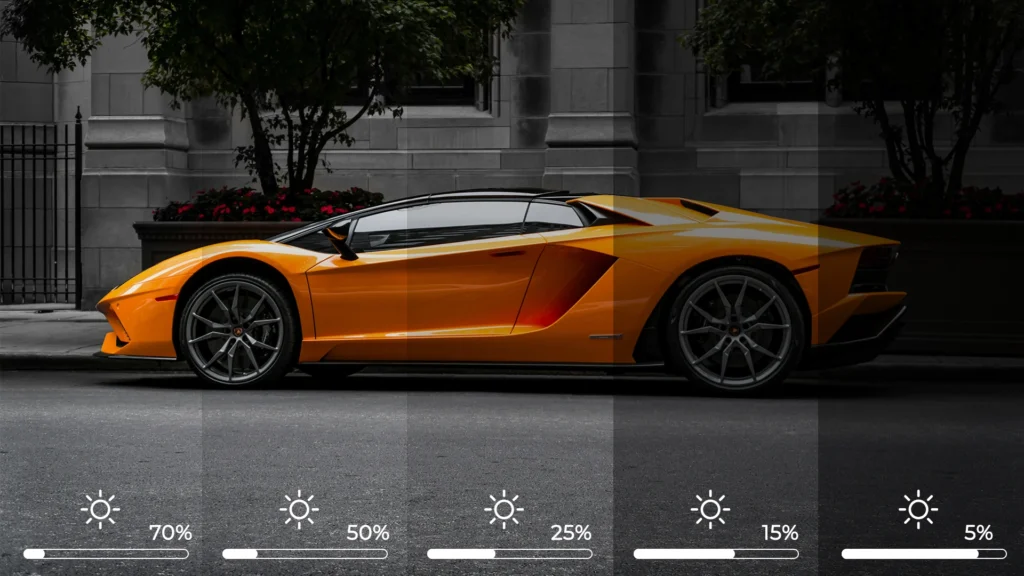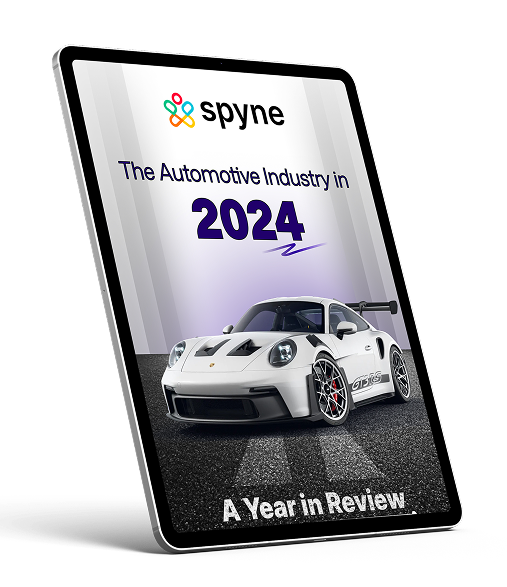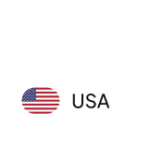Welcome to our comprehensive guide on auto window tinting! From understanding the types of window tint available to navigating legal regulations and exploring virtual tinting options, we’ve got you covered. Whether you’re a car owner seeking to enhance privacy and aesthetics or a professional installer looking to streamline your process, this guide offers valuable insights and tips for a successful tinting experience.
What is Auto Window Tinting?
Auto window tinting refers to the process of applying a thin film to the interior of a vehicle’s windows to darken them. This film comes in various materials and shades, offering a range of benefits and aesthetic options. It is designed to darken the windows to block UV rays and reduce glare. On the other hand, virtual window tinting with AI photo editor for auto businesses and individuals utilizes digital technology to simulate different tint shades on vehicles.
This innovative approach allows customers to preview how various tints will look on their cars before making a decision, enhancing visual appeal and customization options. By providing an engaging and interactive experience, virtual window tinting increases customer satisfaction and sales for auto businesses while enabling customers to make informed decisions about their vehicle’s appearance.
How to Tint Windows?
Window tinting involves applying a thin film to windows for various benefits, including UV protection and improved privacy. Equipment required is a Heat gun, Squeegee, Utility Knife, Application Solution, Low Lint Cloth, and Nylon Scrubby. Now let’s dive into the procedure of the same.
Step 1: Preparation
Choose a clean, dry workspace and remove any stickers or residue from the window surface. Clean the window thoroughly with soap and water, then dry it with a clean cloth. Make sure that the surface is dehydrated and no dust particles remain on it.
Step 3: Cutting and Sizing
Spray soapy water on the exterior surface of the window. Now, position the tinting film over the window, ensuring complete coverage, and cut it with the help of a razor or a cutter. Make sure to keep a few extra inches in all directions. Trim any excess film for a neat finish.
Step 2: Applying the Tint
Spray the interior of the window with soapy water and use a squeegee to remove air bubbles. Peel off half of the release liner from the tinting film and spray it with water. Align the tint with the window, press it into place, and tuck it under the seal. Remove the remaining release liner, spray the exposed tint with water, and smooth out any bubbles or water using your fingers and a hard edge.
Forget Physical Hassle and enhance your vision with Virtual Window Tinting. Transform your space with the magic of virtual window tinting! Whether you’re a business owner or simply an individual with an eye for design, Spyne offers revolutionary automotive solutions that eliminate the complexities of traditional window tinting.
How to Choose the Right Window Tint?
There are a few things to take into account while choosing the best tint for a car:
1) Location: Take into account the local weather and amount of sunlight.
2) Existing Glass: Find out if privacy glass has been added to your automobile already.
3) Visible Light Transmittance (VLT): This measures the amount of light allowed to pass through the tint.
4) Visible Light Reflectance (VLR): The tint’s reflectivity, which influences visibility and privacy.
5) Total Solar Energy Rejected (TSER): The proportion of solar radiation that the tint blocks affects interior temperature regulation.
6) Familiarize with State Laws: Understand the regulations regarding window tint darkness in your state.
7) Explore Options: Research different types of tint, such as carbon color-stable or ceramic IR, to find the one that suits your needs.
8) Seek Professional Advice: Consult with a reputable window tint installer for guidance and recommendations tailored to your preferences and circumstances.
Different Types of Window Tint
There are indeed various types of window tint available for car dealership merchandising, each with its characteristics and advantages. Here’s a brief overview of each:
1) Dyed Window Tint
This type of tint is made by placing a layer of dye between an adhesive layer and a protective outer layer. Dyed tint absorbs heat and reduces glare, making it a popular and cost-effective choice. However, it may not be as effective at blocking heat as some other types of tint.
2) Metalized Window Tint
Metalized tint is made by applying layers of metallic particles to a thin layer of adhesive. This type of tint is known for its durability and heat-rejection properties. It can block a significant amount of heat and UV rays, but it may interfere with electronic signals such as GPS and cell phone reception.
3) Hybrid Window Tint
Hybrid tint combines elements of both dyed and metalized tint. It typically consists of a dyed layer for color and appearance, combined with a metalized layer for heat rejection and durability. Hybrid tint offers a balance between the benefits of dyed and metalized tint.
4) Carbon Window Tint
Carbon tint is made by infusing carbon particles into the tint film. This type of tint is known for its high heat rejection properties and its ability to block UV rays without interfering with electronic signals. Carbon tint also provides a sleek, matte finish that enhances the appearance of the vehicle.
5) Ceramic Window Tint
Window tint ceramic is made by embedding ceramic particles into the tint film. This type of tint offers superior heat rejection, UV protection, and clarity compared to other types of tint. Ceramic car tint is also highly durable and does not interfere with electronic signals. However, it tends to be more expensive than other types of tint.
Each type of window tint has its own unique auto tint benefits and drawbacks, so it’s essential to consider your priorities and preferences when choosing the right tint for your vehicle or property.
Benefits of Car Window Tinting
Auto window tinting provides numerous benefits, making it a popular choice for vehicle owners. Here’s an introduction to some of the key advantages:
1. Privacy: Tinted windows provide privacy for occupants and belongings.
2. Shattered Glass Protection: Tinted film can hold shattered glass together in case of an accident, enhancing safety.
3. Enhanced Appearance: Tinting improves the aesthetic appeal of your vehicle.
4. Glare Reduction: Tinted windows reduce glare, enhance visibility, and reduce eye fatigue.
5. UV Ray Blocking: Tinted film blocks harmful UV rays, protecting occupants and interior surfaces from sun damage.
6. Temperature Control: Tinting helps keep the car cooler by reducing heat absorption.
7. Upholstery Protection: Tinted windows help prevent fading and deterioration of interior upholstery.
8. Theft Prevention: Tinted windows make it harder for thieves to see inside the vehicle, reducing the risk of theft.
9. Improved Safety: Reduced glare and UV protection contribute to safer driving conditions.
10. Solar Heat Rejection: Tinted film rejects solar heat, making the interior more comfortable.
11. Energy Efficiency: By reducing the need for air conditioning, tinting contributes to energy efficiency.
12. Interior Preservation: Tinted windows help preserve the interior of the vehicle by protecting it from sun damage.
13. Added Insulation: Tinting provides additional insulation, helping maintain a comfortable interior temperature.
14. Better Visibility: Tinted windows can improve visibility by reducing glare and enhancing contrast.
Overall, automotive window tint offers numerous advantages, including improved comfort, safety, and protection for both occupants and the vehicle itself.
Disadvantages Of Tinting Windshields
Despite their many possible benefits, auto window tint shades possess some disadvantages and drawbacks that must be considered when installing them. Here are some of the stumbling blocks that an aware customer must know:
1.Reduced visibility: Sometimes, people get dark window tinting, leading to reduced visibility. It usually becomes difficult for auto drivers to drive at night, which becomes a safety hazard for auto owners.
2. Easy Damage: Due to the many cheap and degraded quality tints available in the market, customers generally compromise the quality and face damage issues. The tint breaks easily after some time, and bubbles may appear.
3. Difficulty in cleaning: Dust sometimes accumulates in the window corners, and cleaning the edges takes time.
4. Cost: Auto window tinting costs are higher when we choose quality options, and they are sometimes not cost-effective when we compare their utility.
5. Longevity: Tints are usually not for long-term use. They fade or damage over time and demand periodic replacement.
6. Not eco-friendly: Window tints that are non-recyclable or non-biodegradable accumulate on the earth’s surface and cause severe pollution. Therefore, it is suggested that eco-friendly tints be used in the auto market.
Manual Tinting VS AI Tinting
Window tinting is done by taking your car to the service provider or by mobile car tinting, where the dealer provides doorstep car tint services. In both cases, the customer tries to decide which tint to use or what car tint level to choose. He is totally dependent upon the salesperson’s pitch and the availability of the variety. They cannot test the tint and examine how it looks. This is where AI software comes into the frame. This software helps test the product beforehand on the vehicle and make decisions based on that.
How Spyne helps in the process!
Spyne AI is an automotive software that helps dealerships in 360 virtual car showroom and car cataloging. It provides various auto-editing features, out of which window tinting is one. Through this, the dealers can tint the car windows and enhance the vehicle’s appearance in online studios. Not just dealers but users can also check the tint by following a simple process:
Step 1: Go to the spyne AI page.
Setp2: click on the products and select the virtual showroom option.
Step 3: Scroll down the page, and you will see the many editing options available.
Step 4: Choose the window tinting option.

Therefore, with easy clicks, you can take a look at your car and decide what level of shade to choose and how it looks on your vehicle
Best Tips for Auto Tinting
Before getting started with auto tinting, you must follow these tips for a smooth process:
1) Explore Your Options
Start by familiarizing yourself with the array of window tint choices available. From dyed to ceramic, each type offers distinct advantages. Researching and comparing will help you pick the perfect fit for your needs.
2) Quality Matters
Consider investing in premium tints. Though they may come with a higher price tag, top-tier tints often provide superior UV protection, heat rejection, and durability compared to budget options.
3) Shield from UV Rays
Protect yourself and your car’s interior by opting for tints that reflect UV rays. This added layer of defense helps prevent sun damage over time.
4) Check State Regulations
Before tinting your windows, ensure compliance with local laws. Understanding tint percentage regulations for different windows can prevent potential fines and legal headaches.
5) Leave it to the Pros
While DIY kits exist, it’s wise to entrust tint installation to professionals. Their expertise ensures a flawless finish, minimizing the risk of bubbles or uneven tinting.
6) Follow the Rules
Know which windows can be tinted and which cannot. This not only keeps you legal but also ensures clear visibility and safe driving conditions.
7) Maintain with Care
Preserve the appearance and effectiveness of your tints by cleaning them gently with mild soap and water. Avoid abrasive materials and refrain from rolling down freshly tinted windows to allow for proper curing.
By following these tips, you’ll achieve a successful and satisfying auto tint experience while maximizing the benefits for your vehicle.
Car Window Tinting Prices
Car tint prices fluctuate based on various factors such as the type of vehicle, the brand of tint used, the specific tint material, the number and complexity of windows, geographic location, and whether the installation is done by a professional or DIY. After conducting market research and gathering community feedback, the cost of window tinting by professional tinters suggests that the average cost to tint car windows is within the range of $99 to $850.
How To Remove Window Tint Film?
To remove window tint film you need to follow a few steps for a seamless installation. Here is the step-by-step guide for removing the window tint filming:
1) Gather your tools: Get a heat gun, razor blade, scraper, spray bottle, cleaning solution, face mask, safety glasses, and gloves ready.
2) Prepare the area: Choose a well-ventilated space outdoors or an open garage. Lay down tarps or plastic sheeting around your vehicle and protect the interior.
3) Heat the film: Use a heat gun or steamer to loosen the adhesive. Apply heat to the edges of the tint film until it starts to curl.
4) Lift the film: Once the film curls, gently peel it away using a razor blade or scraper. Take your time to avoid damaging the window.
5) Remove adhesive residue: Use adhesive remover like isopropyl alcohol or ammonia solution to clean off any remaining residue. Soapy water can also work.
6) Clean the window: Wipe away any leftover residue and cleaner to finish the process.
What are Different Car Tint Levels
There are many options available and different mobile car window tinting shades based on the light transmission and visibility. Let us know what different percentage of tint shades are available and provided in the automotive market.
1) 5%: This is the maximum tint level. It barely allows any light through the window, making the interior of the car hardly visible from the outside.
2) 15%: This is also a very dark tint percentage. It allows only fifteen percent of the light to enter inside the car. It reduces the harsh lights and glares of sunlight and headlights, reducing strain on the eyes.

3) 25%: These tints block around seventy-five percent of the light and roughly allow twenty-five percent light from the outside. Compared to the above two, they provide less heat reduction.
4) 50%: Fifty percent of the light is blocked from entering the car through windows and shields. It has moderate light transmission and balanced light reduction and visibility.
5) 70%: It allows enough light inside the car by blocking just thirty percent of the light, but it is efficient enough to keep sunlight and other harsh beams away. Additionally, it lessens the load on the car’s AC and enhances mileage.
Legalities and regulations of window tinting
Before tinting your car windows, it’s vital to be aware of the auto window tinting laws by state. These rules vary greatly depending on your location, so it’s important to familiarize yourself with the specific regulations in your area. In many states, window tinting is permitted as long as it adheres to the designated visible light transmittance (VLT) limit. Law enforcement typically utilizes tint my car meters to measure the amount of light passing through the glass, expressed as a percentage of VLT.
Here’s a breakdown of key points and resources to help you navigate the legalities:
Key Factors
1) Visible Light Transmission (VLT): This percentage indicates how much light passes through the tinted window, with lower VLT tint meaning darker tint and stricter regulations.
2) Window Position: Different regulations apply to windshields, front-side windows, rear-side windows, and back windows.
3) Medical Exemptions: Some states allow darker tints for documented medical conditions that necessitate reduced sunlight exposure.
General Regulations
1) Windshield: Most states require at least 70-75% VLT for the windshield, while some might prohibit any tinting.
2) Front Side Windows: VLT requirements typically range from 35% to 50%, but it’s best to check your specific state.
3) Rear Side and Back Windows: These often have less stringent regulations, allowing for darker tints like 20-35% VLT, but again, double-check your state’s laws.
Conclusion
Empowered with knowledge about auto and mobile window tinting, you’re now equipped to make informed decisions and achieve the desired results for your vehicle. Whether you’re considering physical tinting, or exploring virtual options, remember to prioritize quality, compliance with regulations, and expert guidance. With the right approach, car tint windows can enhance aesthetics, improve comfort, and provide long-lasting benefits.





























